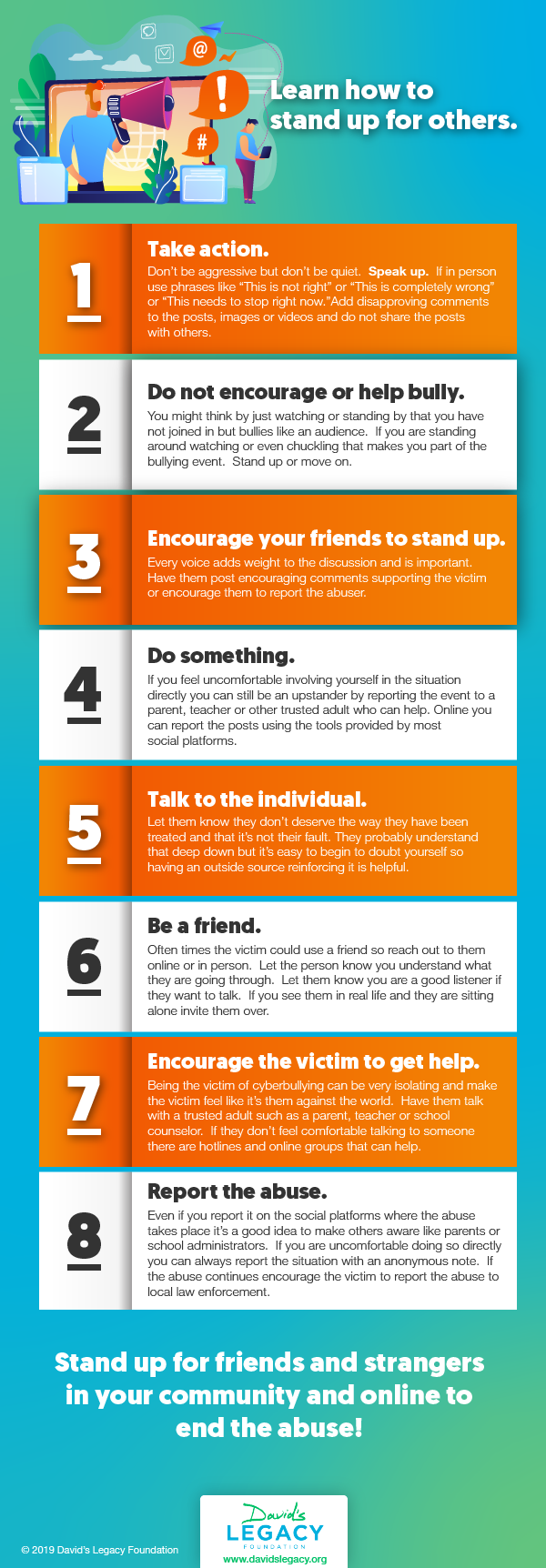What exactly is an upstander?
An upstander is a person that sees something that is wrong and takes action to make it right. Upstanders are key to diffusing bad situations and helping people who can’t help themselves. Standing up for what is right, protecting someone from harm or supporting an individual whether in person or online shows social responsibility.



